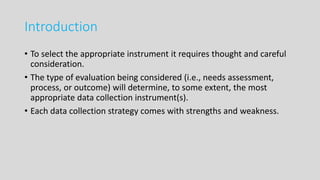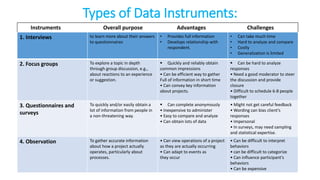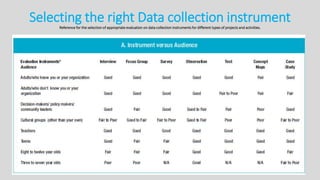The document discusses various data collection instruments that can be used for education projects, including their purposes, advantages, and challenges. It provides details on interviews, focus groups, questionnaires/surveys, observation, literature reviews, tests, concept maps, document/product reviews, and case studies. It also discusses determining sample sizes, levels of evaluation from resources to social/environmental impacts, and using rubrics and logic models to assess performance. The key instruments covered are interviews, focus groups, questionnaires, observation, and document reviews.




























